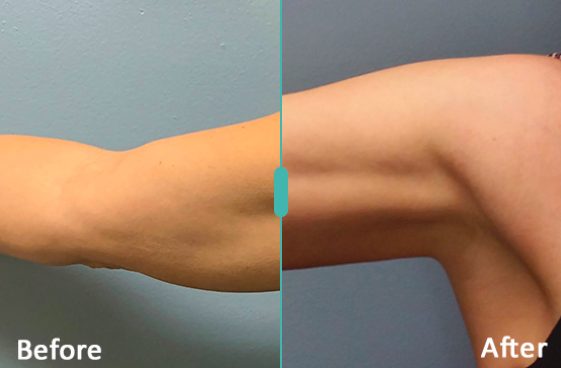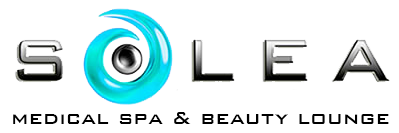First time visitor? Pick $100 towards treatment of your choice in Solea MedSpa or pick the Promo


As spring rolls in and wardrobes get lighter, many are turning to non-invasive options to refresh their appearance. Among the most talked-about are Venus Legacy vs. Morpheus8—two technologies that target skin laxity and support collagen production. But despite similar goals, these treatments work differently and are suited to different needs.
Let’s explore how each works, what results to expect, and how to decide which one fits your goals this season.
What Does Morpheus 8 Do?
This treatment is designed to go beneath the skin’s surface, triggering collagen production and tissue remodeling. Using ultra-fine needles and thermal energy, it reaches deep layers of the dermis to firm sagging areas and smooth uneven texture.
It’s effective for addressing facial laxity, softening jowls, lifting under the eyes, and tightening areas with more advanced signs of aging. The dual action—both mechanical and thermal—makes it a favorite for those who want more than surface-level change.
Understanding the Venus Legacy Machine
The Venus Legacy machine works with multi-polar radio frequency, pulsed electromagnetic fields, and a suction element that gently pulls tissue closer to the source of heat. This combination improves circulation, boosts fibroblast activity, and supports healthy elasticity.
Wondering what is Venus Legacy treatment best used for? It’s typically recommended for firming loose skin on the arms, abdomen, and thighs, as well as reducing the look of cellulite. The suction component allows for deeper energy penetration, making it a great option for body-focused rejuvenation.
Venus Legacy vs. Morpheus8: What Sets Them Apart?
The debate between Venus Legacy vs. Morpheus8 often comes down to how aggressive you want to go. Morpheus8 uses microneedles to deliver RF energy directly into the skin, leading to noticeable results after just one session. Venus Legacy takes a gentler approach, heating tissue externally for a slow, steady lift.
If you’re looking for a firmer jawline or want to tackle wrinkles quickly, Morpheus8 might have the edge. For body contouring, cellulite smoothing, or maintaining elasticity, Venus is an excellent fit—especially if you prefer a treatment with no downtime.
Downtime and Experience
Both treatments are known for being non-surgical and relatively low-maintenance, but there’s a key difference in recovery.
Venus Legacy sessions are often described as relaxing. They feel warm—almost like a hot stone massage—and most people walk out ready to carry on with their day.
Morpheus8, however, involves microneedling, so it can lead to some redness, swelling, or flaking. Recovery is usually mild and short, but it’s something to consider if your schedule is tight.
Results Timeline
Morpheus8 typically offers results after just one to three sessions, with visible improvements developing over a few weeks as collagen regenerates. These results can last up to a year or more, depending on skin condition and lifestyle.
Venus Legacy delivers results gradually. Clients often begin to see firmer skin and smoother texture after the third or fourth session, with maintenance every few months for lasting benefits.
That said, consistency plays a big role—especially for non-invasive, surface-level energy devices.
Candidacy: Who’s a Good Fit?
Choosing between the two depends on individual goals.
Morpheus8 is best suited for those with deeper folds, facial laxity, or visible aging who want a longer-lasting reset. It’s often used to enhance jawline contour, firm up the neck, and tighten the under-eye area.
Venus Legacy works well for clients just beginning to notice skin looseness or for those targeting larger areas of the body. It’s also popular for reducing the appearance of cellulite and improving overall tone in areas like the thighs and buttocks.
Medspa Experience: What to Expect
During a typical medspa session, the provider will assess your goals and skin condition to recommend a custom plan. Morpheus8 sessions take about 30–45 minutes and may include topical numbing to increase comfort. Venus Legacy sessions are generally quicker and require no preparation or aftercare.
If you’re unsure where to start, a consultation can help align your desired outcome with the right technology.
Budgeting for Your Goals: How Much Does Morpheus 8 Cost vs. Venus Legacy?
The price varies depending on area and session depth, but a typical treatment ranges from $800 to $1,200 per area. Some clinics offer package pricing or combine Morpheus8 with PRP for enhanced results.
Venus Legacy is more affordable per session, with packages often designed around multi-area treatments. However, it may require more frequent visits to maintain optimal results, so long-term costs can even out.
Timing It Right: Why Spring Works
This season is a great time to start aesthetic procedures. Cooler weather is ideal for treatments that require light downtime, while spring energy naturally pushes people toward healthier routines—including their aesthetic choices.
Plus, results develop gradually, so beginning in spring means you’re looking fresh just in time for summer trips, events, or celebrations.
Final Thoughts: Venus Legacy vs. Morpheus8
So when weighing Venus Legacy vs. Morpheus8, it really comes down to what you want:
- Need visible lifting and tightening after one session? Morpheus8 offers deeper penetration and more dramatic change.
- Prefer something needle-free and relaxing with cumulative effects? Venus Legacy brings gradual improvement with a pleasant experience.
The good news is—these aren’t either/or options. Many people benefit from using both, alternating treatments seasonally or targeting different areas with different methods.
In the end, the best results come from understanding your goals and choosing the right tools to match. Both devices are clinically tested, widely used, and customizable—making them standout choices in today’s non-surgical skin rejuvenation.
Questions? Get a
-

Solea Medical Spa and Beauty Lounge your first and final destination for all your beauty and medical needs.
305-912-2155
info@soleabeautylounge.com
18140 Collins Ave, Sunny Isles Beach, FL, 33160, United States
- Body Treatments
- Health And Wellness Treatments
- Medical Treatments
- Facial Treatments
